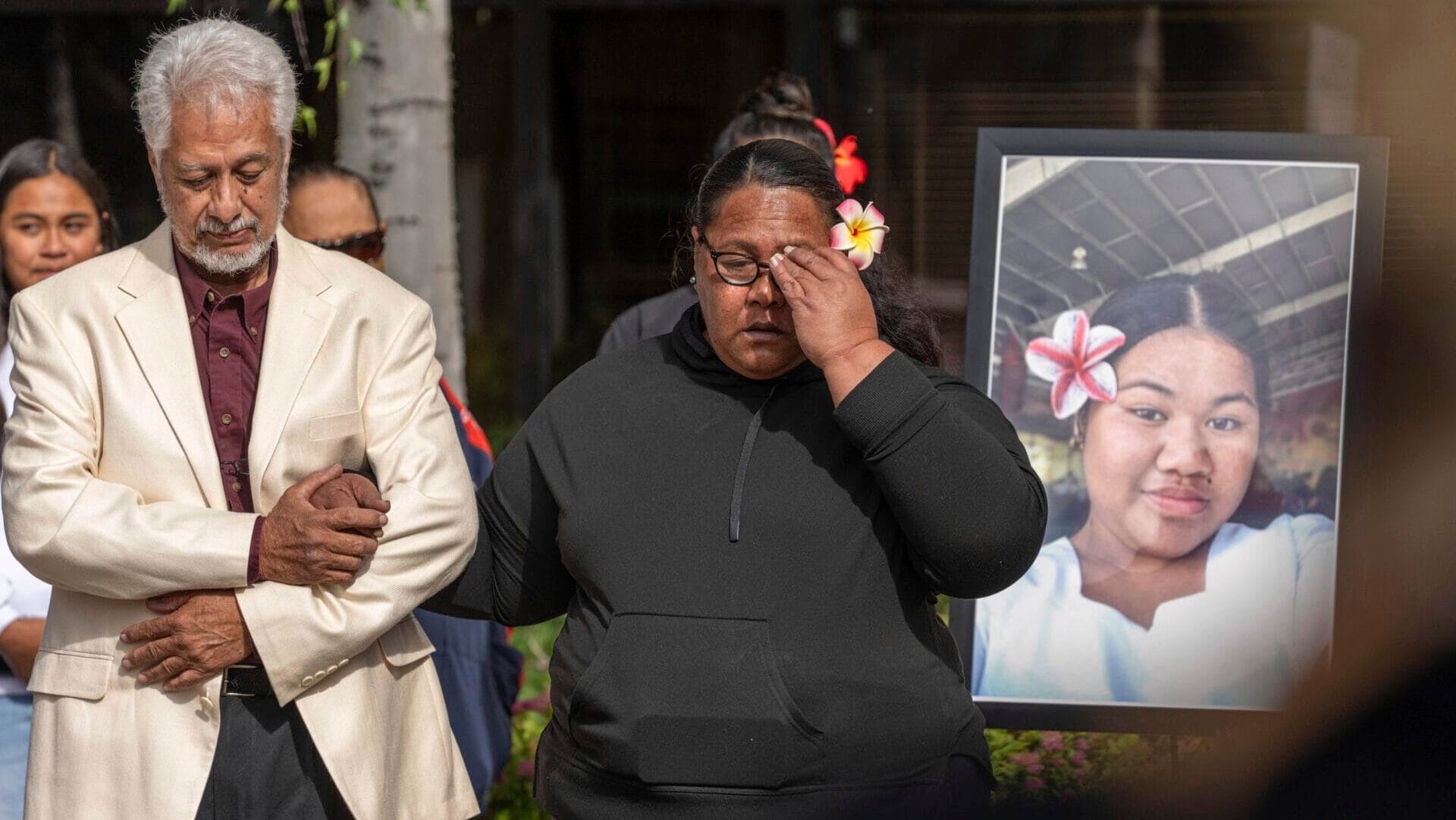The shooting death of a 16-year-old girl by police is among a spate that’s upset Anchorage residents
ANCHORAGE, Alaska (AP) — Easter Leafa was sitting under a blanket on her balcony with a knife when Anchorage police arrived, responding to a call for help from her family. Instead of showing her hands as told, they said, the 16-year-old girl stood and approached them with the blade.
Two officers opened fire simultaneously, one with a less-lethal foam projectile and the other with real bullets, killing her two days before Leafa was to start her junior year of high school. She had recently moved from American Samoa to get a better education and was still learning English, her family said.
Leafa was among seven people shot by Anchorage police since May, the most recent a homicide suspect critically injured after officers said he opened fire on them Friday afternoon. That is more than twice as many as the department typically shoots in a year. Four of the subjects were killed.
The spate has made Anchorage the latest in a long list of American cities to wrestle with how police use force and prompted an apology to Leafa’s family along with promises of reform from the city’s new mayor.
“This cannot be our new normal,” Mayor Suzanne LaFrance told a news conference after Leafa’s death.
The other six shootings involved suspects who reportedly had firearms, shot at police or, in two cases, were armed homicide suspects.
The leader of the city’s police union, Darrell Evans, suggested in a statement Friday that the unusual spike in shootings by officers reflected “the chaos our city is facing.” There have been 20 homicides in Anchorage this year, 14 in the past few months.
While that total is already approaching last year’s 23 with about a third of the year still to go, it’s roughly in line with typical Anchorage homicide totals: there were 35 in 2019 and 28 in 2022.
At least four of those shot by police were people of color, and that has especially rattled Anchorage’s minority residents.
The city is one of the most diverse in the U.S., with large populations of Asian, Hispanic and Alaska Native people, including many who came for military service and remained. There are over 100 languages spoken by students in Anchorage schools, and the U.S. Census said Anchorage had the four most racially and ethnically diverse neighborhoods in the nation after the 2020 count.
The police department has tried to increase its diversity over the past decade, but still 7 in 10 officers are white, far more than the city’s population of 291,000, which is a little over half white, according to Census data.
Leafa’s Aug. 13 killing prompted several prayer vigils as well as a march past Anchorage police headquarters that drew hundreds of people. Participants expressed grief and anger, as well as bewilderment at why one officer used live ammunition while the other had a less-lethal option. The police department has offered no explanation.
Tammalivis Salanoa, with the Polynesian Association of Alaska, told The Associated Press that some in the Pacific Islander community will think twice before they call Anchorage police for help.
“They should be ready for these kinds of circumstances,” she said. “They knew what they signed up for, whereas we as a community are just in our living rooms, just trying to live our lives. We don’t expect to call for help and then that be the last call we ever make.”
LaFrance and Police Chief Sean Case, both of whom took office in July, said they would have an outside entity investigate the Leafa shooting. They said they also would establish an advisory committee and have an outside party audit the department’s policies and procedures and recommend practices to reduce uses of force.
Case said that when he became chief he decided to have all of Anchorage’s police shootings over the past 15 years reviewed. On Monday, he plans to name a captain to oversee all aspects of department training.
The department already trains in de-escalation techniques. But Leafa’s family told told Anchorage television station KTUU that one of the officers arrived with his gun out. A sister had called police to report that Leafa had come at her with the knife. The officers sequestered the rest of the family in a bedroom before approaching the teen.
“She was a minor,” said Faialofa Dixon, another sister. “They should have asked questions when they came in.”
Dallas attorney James Roberts represents the family of Kristopher Handy, who in mid-May became the first person killed by Anchorage officers this year.
Police initially said officers shot Handy, who was severely intoxicated, when he raised a long gun toward them in an apartment complex parking lot. But the shooting was the first since Anchorage police began wearing body cameras, and video taken by those cameras and by a neighbor’s security camera appeared to show Handy kept the gun down before police started shooting.
The state’s Office of Special Investigations found the shooting justified, saying Handy was walking toward officers and ignoring orders to drop the weapon. His family filed a wrongful death lawsuit.
“It just appears that these officers are going in, not with the thought of de-escalating the situation, but with the thought of using their weapons immediately,” Roberts said.
Video from Leafa’s killing has not been released.
Evans, the president of the Anchorage Police Department Employees Association, said he was dismayed the mayor apologized when an investigation into the shooting had only just begun.
“We have also heard the oversimplified statement that ‘six officer-involved shootings since May is far too many’ and how that somehow reflects a failure only upon the policing profession,” he wrote. “That level of oversimplification does nothing to acknowledge the weight of each of those incidents.”



